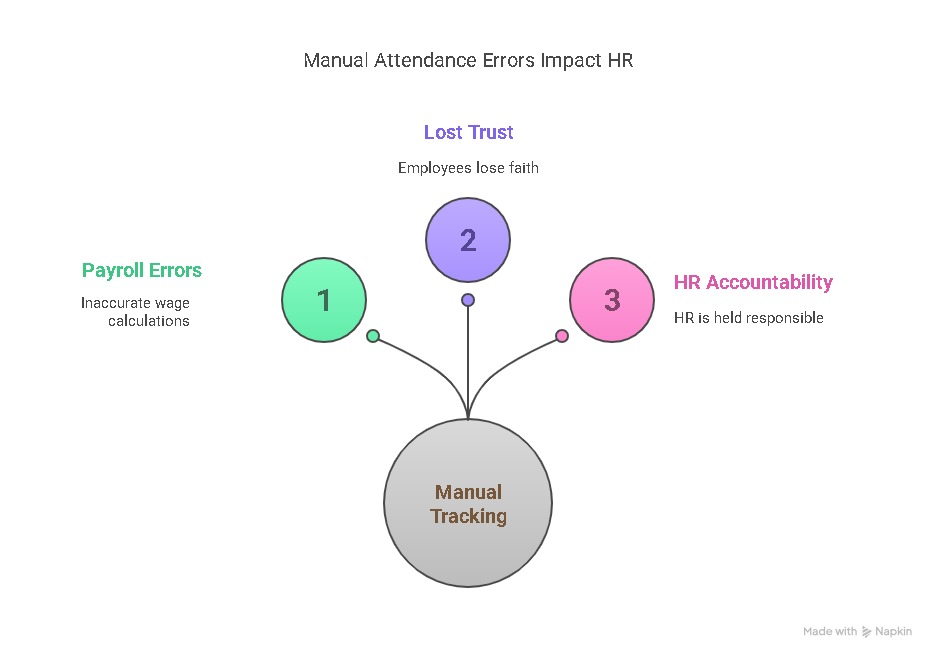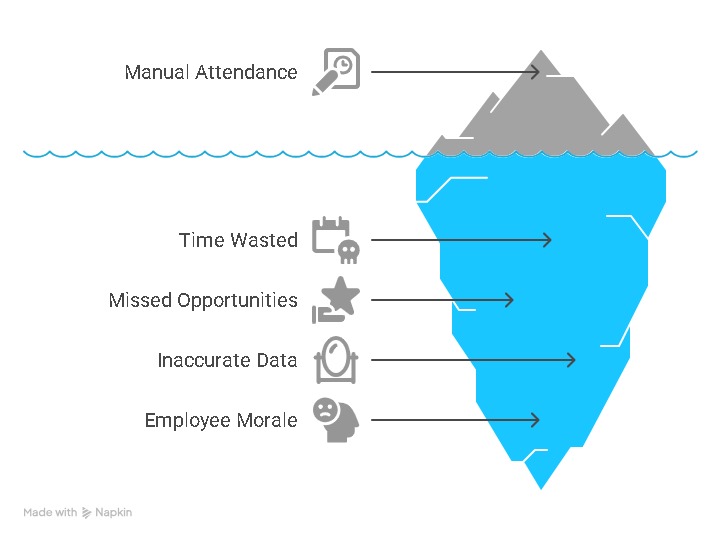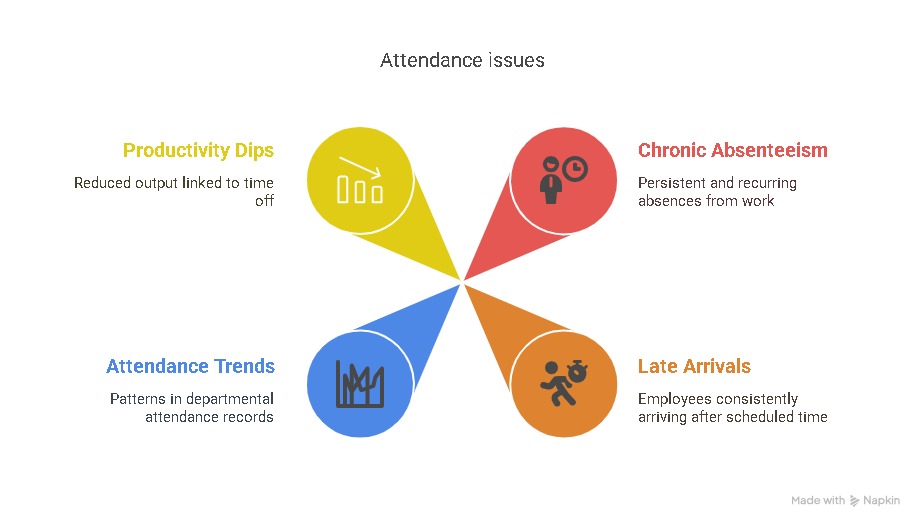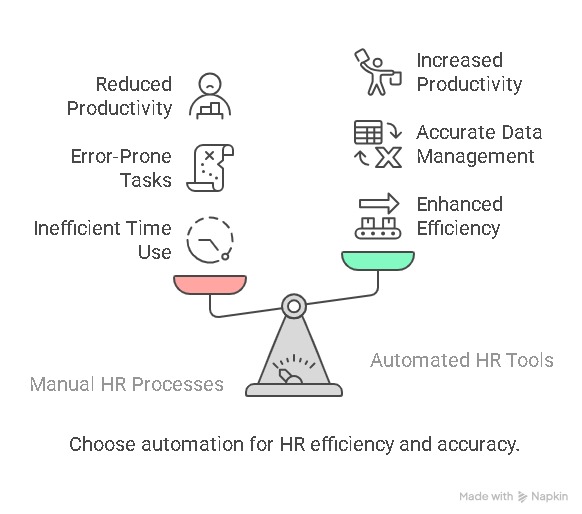Your HR team deserves better than spreadsheets and sign-in sheets.
HR professionals are the backbone of your organization. They handle onboarding, performance management, compliance, employee engagement—and more. But when they’re forced to waste hours on manual attendance tracking, it’s not just inefficient—it’s damaging.
Manual processes might seem like a cost-saving choice, but in reality, they’re a hidden drain on productivity, accuracy, and morale. Let's break down exactly how this outdated practice is holding your HR team back—and what you can do to fix it.
🔍 1. Manual Attendance Tracking Breeds Human Error
Whether it's paper timesheets, Excel files, or outdated punch cards, manual systems are prone to mistakes. A misplaced decimal, a forgotten clock-in, or a mistyped date can throw off payroll entirely.
Imagine this: An employee works overtime on multiple days, but their manual log misses one entry. The HR team overlooks it. Now, payroll is wrong. Trust is lost. And guess who’s held accountable? HR.
These errors in HR attendance management aren’t rare—they’re recurring. They cost time, money, and employee trust.

🕒 2. Time Tracking Becomes a Time Waster
Ironically, time tracking challenges in HR usually stem from spending too much time on it. Manual attendance systems require constant monitoring, verification, and follow-up.
Let’s say your HR manager spends 30 minutes a day cross-checking attendance logs. That’s 10+ hours a month that could’ve been used to build culture initiatives, streamline recruitment, or launch an employee wellness program.
What if that time went into something strategic instead?

📉 3. No Visibility, No Control
When you're using manual tools, there’s no live dashboard, no automatic reporting, and no predictive insights. Your HR team is always a step behind—reacting instead of proactively managing.
Without a proper attendance monitoring system, it’s impossible to track:
- Chronic absenteeism
- Late check-ins
- Department-level attendance trends
- Productivity dips tied to time-off patterns

This blind spot leads to reactive management, guesswork, and missed opportunities for improvement.
🏡 4. Remote Work Makes Manual Tracking Obsolete
Post-pandemic, remote and hybrid work aren’t going away. Manual attendance simply can’t keep up.
Asking remote employees to send daily attendance via WhatsApp or email? That’s not sustainable. It's time-consuming for employees and chaotic for HR.
A cloud-based system with geo-tagging and biometric options ensures accurate tracking—whether employees are at home, on-site, or traveling.
Manual tools aren’t built for this world. A digital, flexible solution is the need of the hour.

🙍♂️ 5. HR Professionals Are Burning Out
This might be the most overlooked issue: morale.
No one wants to feel like a data entry operator, especially your HR team. Talented professionals join your company to build people-focused strategies, not to count hours and chase timesheets.
HR time management problems arise not from poor planning—but from being bogged down by outdated tasks. Automating attendance gives them the space to:
- Improve employee experience
- Focus on upskilling and training
- Drive real cultural change
You’re not just fixing a process—you’re empowering a team.
✅ The Smarter Alternative: Modern Attendance Tracking
Implementing a digital HR attendance tracking system doesn't just solve a logistical problem—it creates a competitive advantage.
Features to look for:
- Real-time dashboards
- Automated leave & holiday management
- Integration with payroll and HRMS
- Remote clock-in/clock-out capabilities
- Attendance reports & analytics
These systems eliminate guesswork, reduce compliance risks, and help HR teams become true strategic partners.
🧠 Final Thoughts: Stop Holding Your HR Team Back
In 2025, there's no excuse for wasting your HR team's time with manual processes. Every error, every delay, every frustrated email—it's costing your business in ways you can't always measure.
Give your HR team the tools they need to thrive. Because when HR runs better, your entire organization wins.
